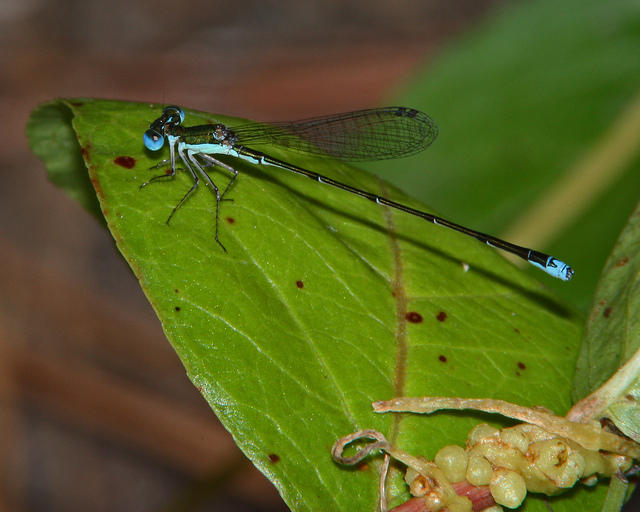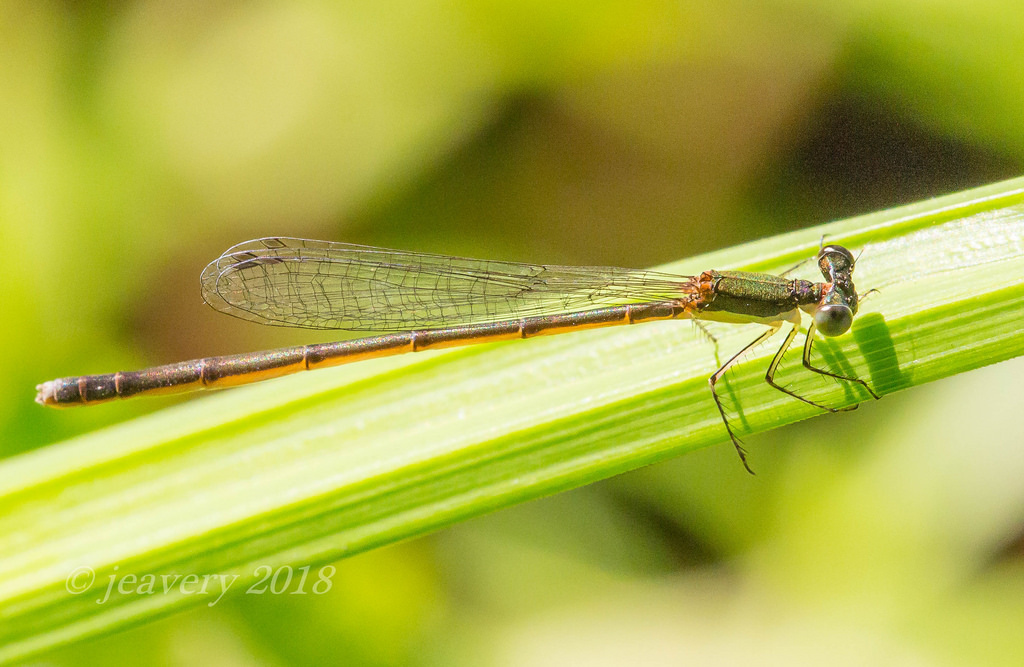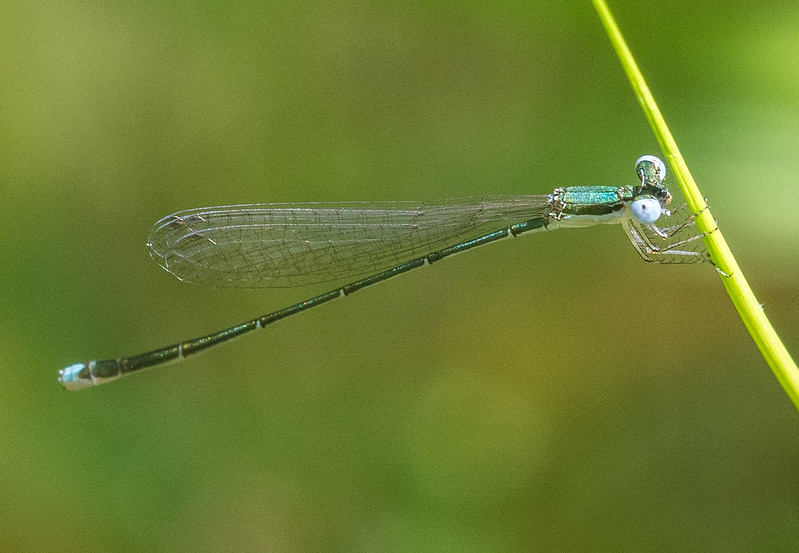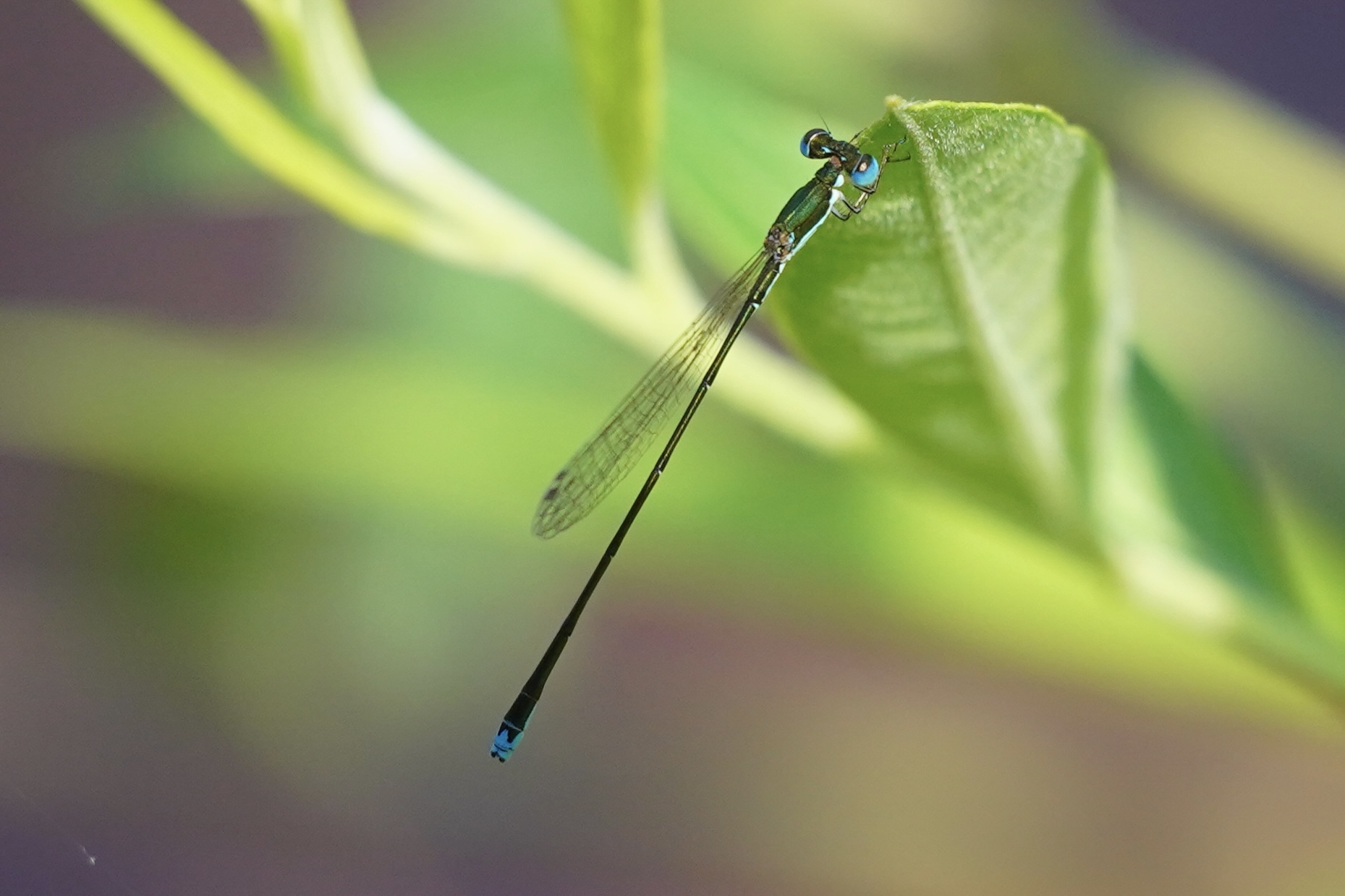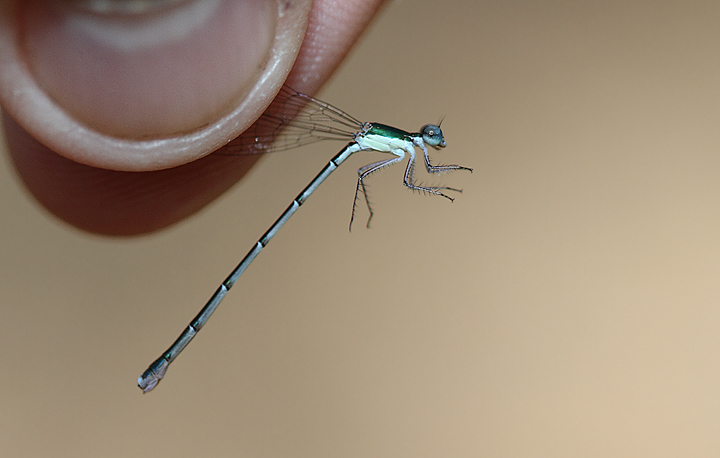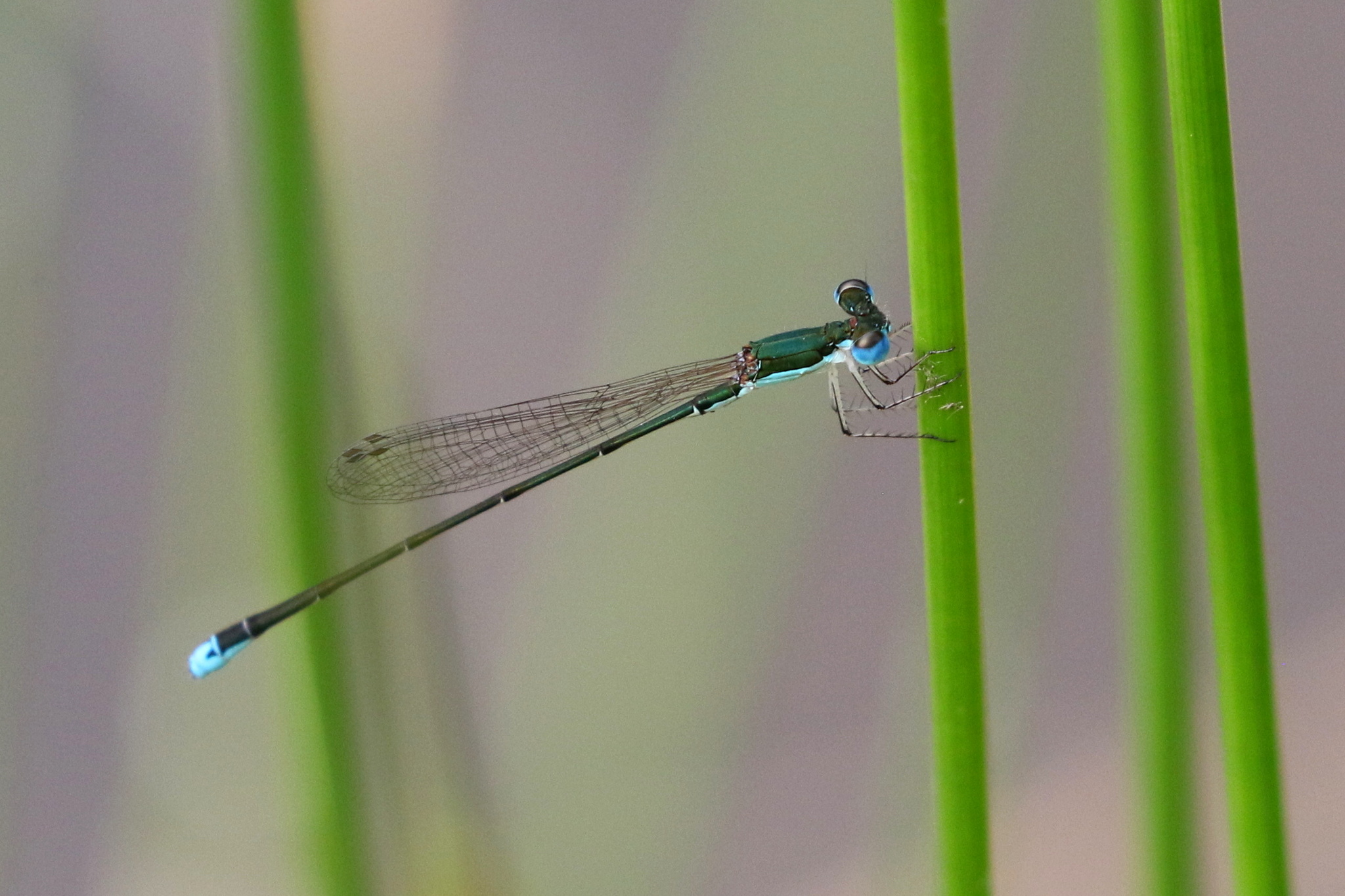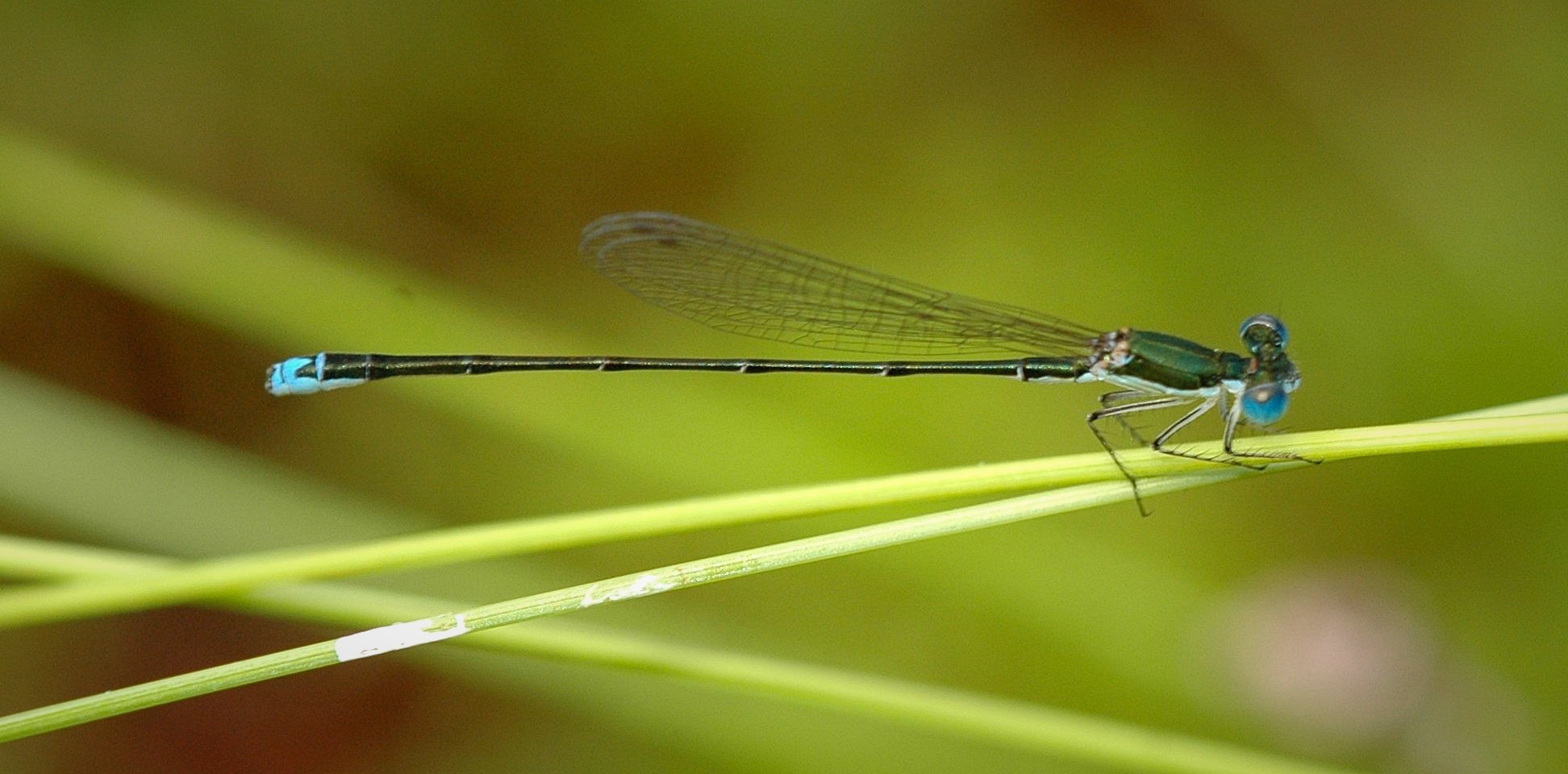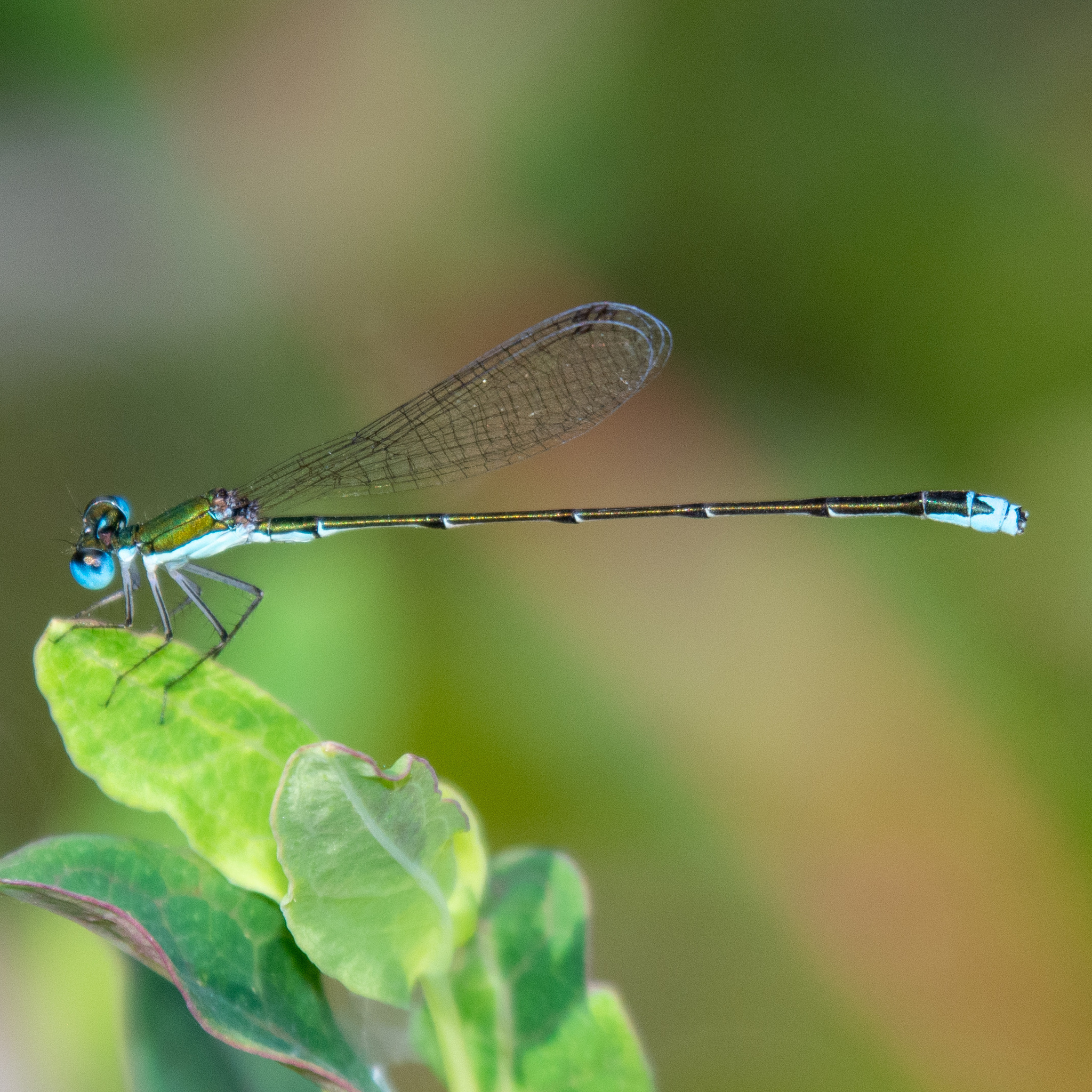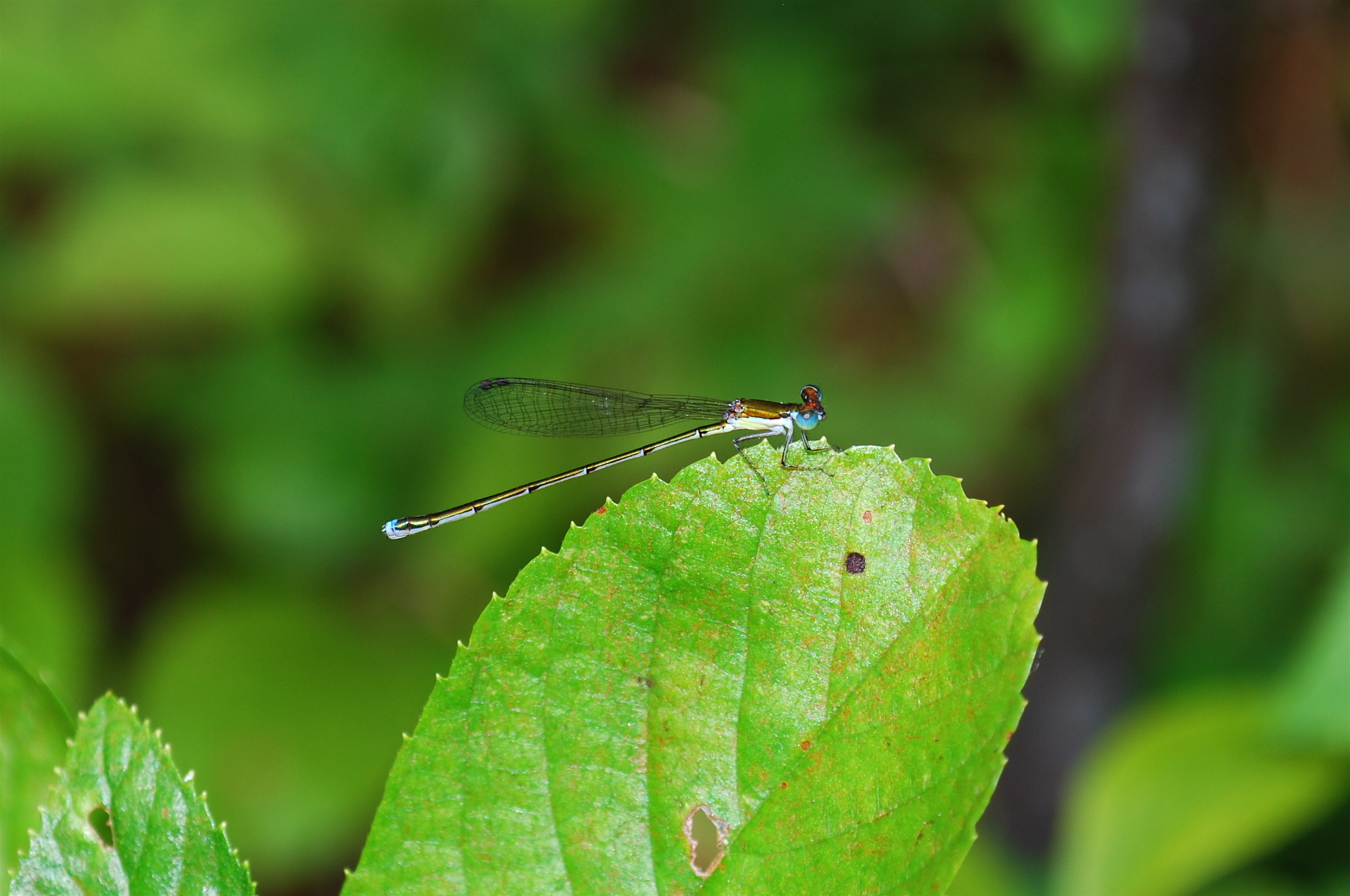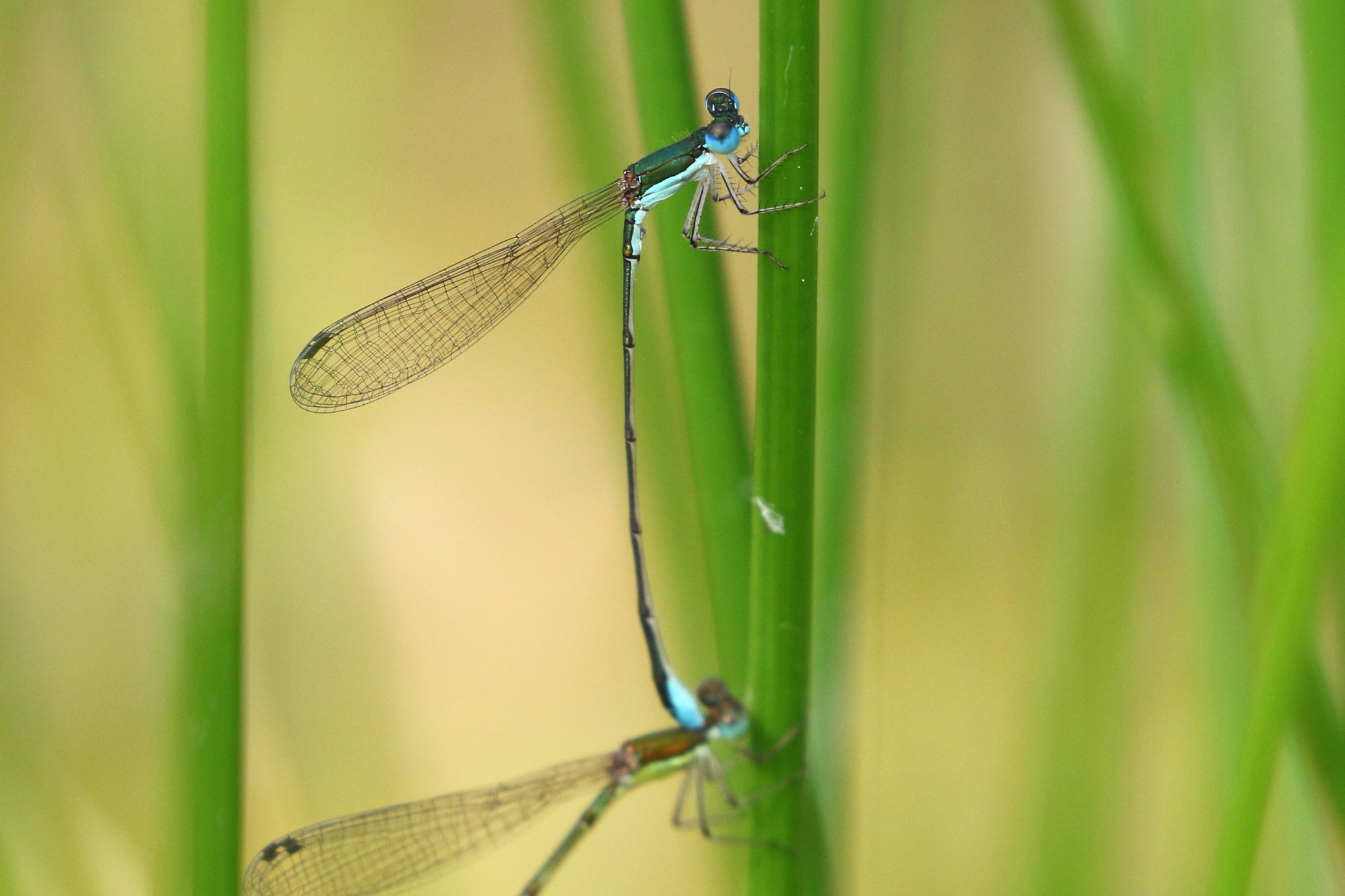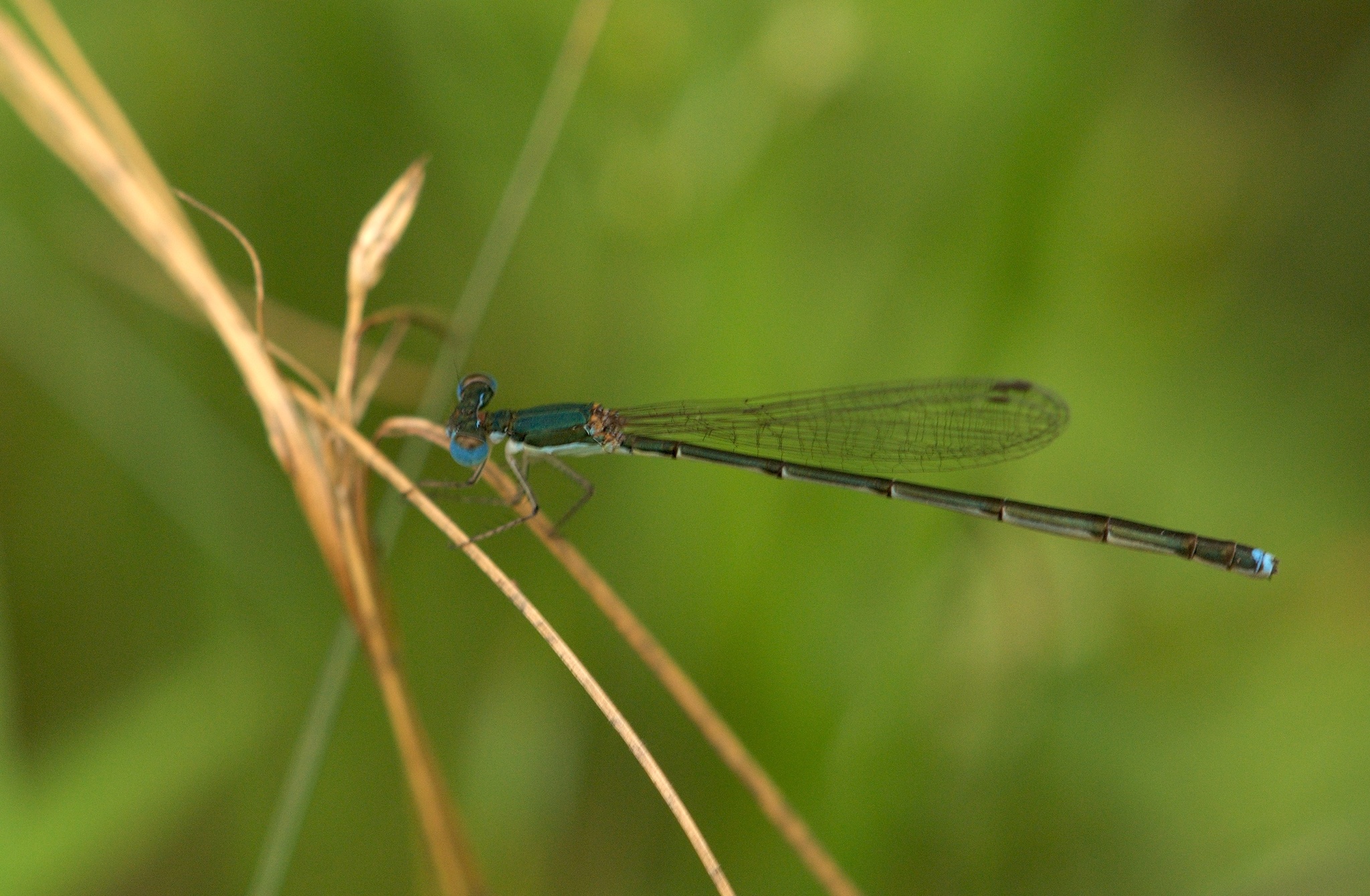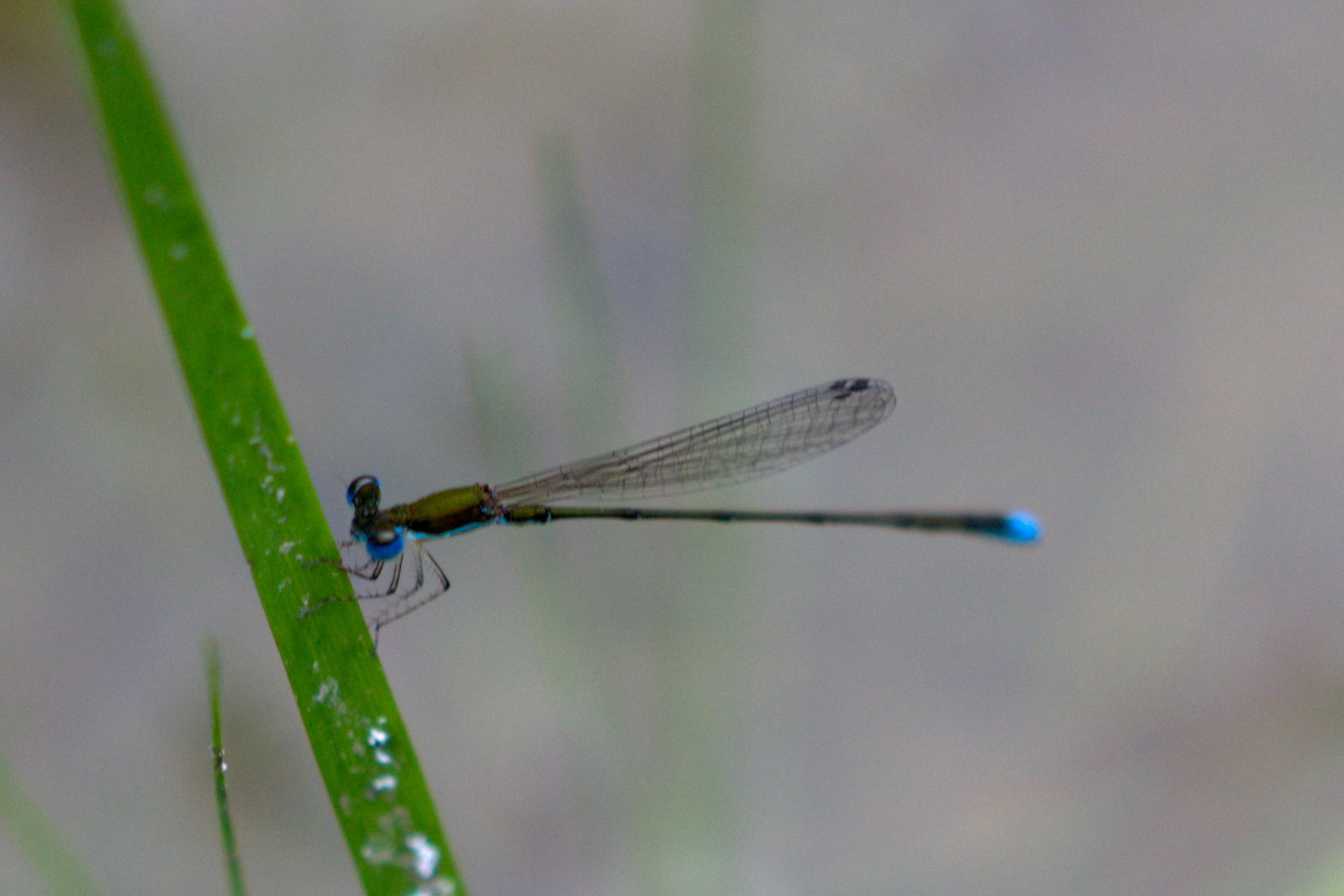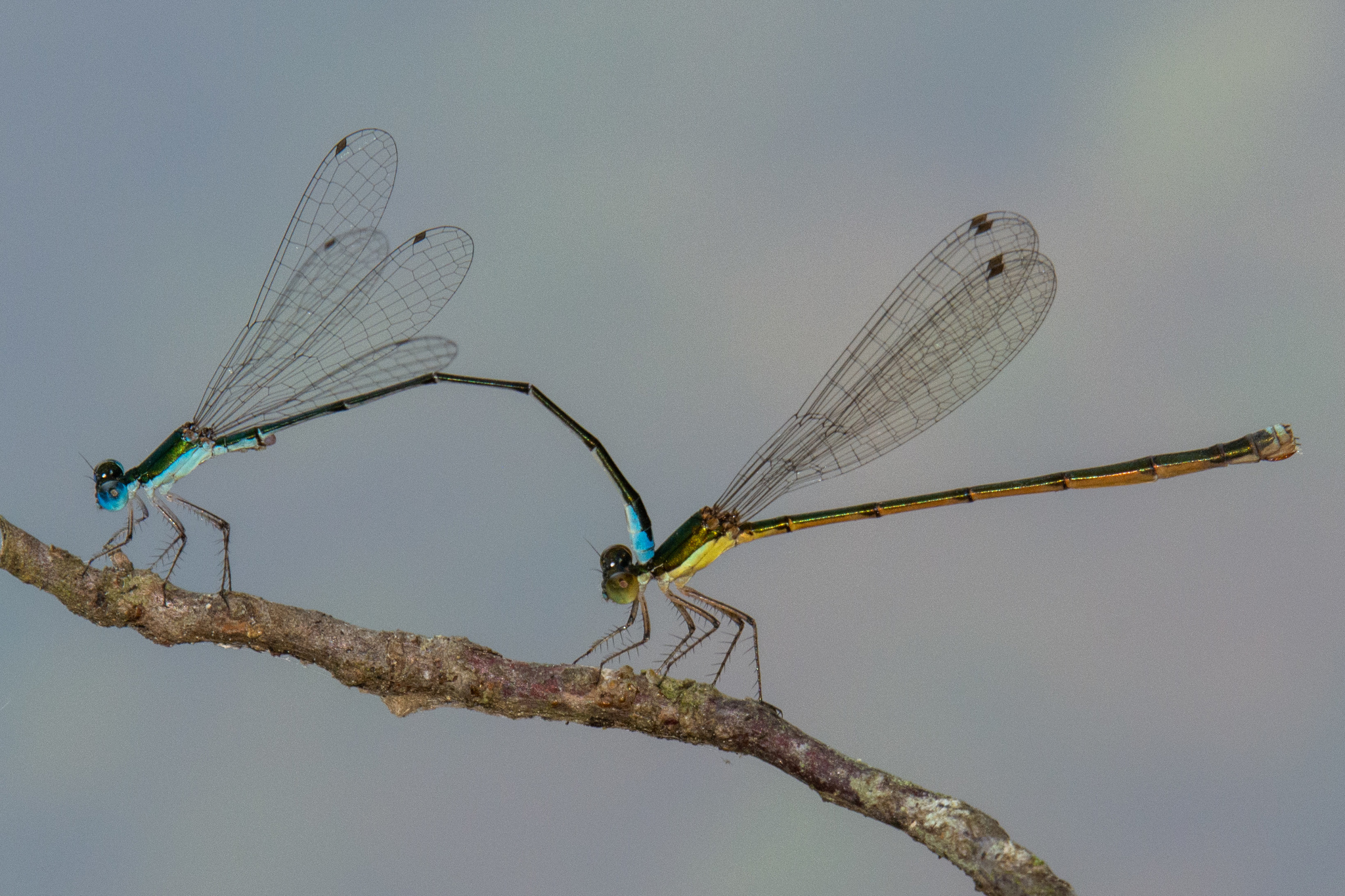Map Snapshot






38 Records
Status
The diminutive Southern Sprite (Nehalennia integricollis) is usually found at well-vegetated ponds or lakes, and at bogs. As with the other species in the genus, these tiny damselflies can be easily overlooked in the dense vegetation they usually inhabit (Lam, 2004). This damselfly ranges through much of the southeast, but has a very sparse distribution in Maryland on the coastal plain. It is known from two counties each on both the Western and Eastern shores (Richard Orr's Dragonflies and Damselflies of Maryland and the District of Columbia). It is ranked as S1-S2 (highly state rare-state rare).
Seasonality Snapshot
Source: Wikipedia
| Nehalennia integricollis | |
|---|---|

| |
| Scientific classification | |
| Domain: | Eukaryota |
| Kingdom: | Animalia |
| Phylum: | Arthropoda |
| Class: | Insecta |
| Order: | Odonata |
| Suborder: | Zygoptera |
| Family: | Coenagrionidae |
| Genus: | Nehalennia |
| Species: | N. integricollis
|
| Binomial name | |
| Nehalennia integricollis Calvert, 1913
| |
Nehalennia integricollis, the southern sprite, is a species of narrow-winged damselfly in the family Coenagrionidae.[1][2][3][4][5] It is found in North America.[1]
The IUCN conservation status of Nehalennia integricollis is "LC", least concern, with no immediate threat to the species' survival. The population is stable.[6][7]

References
[edit]- ^ a b "Nehalennia integricollis Report". Integrated Taxonomic Information System. Retrieved 2018-03-20.
- ^ "Nehalennia integricollis species details". Catalogue of Life. Retrieved 2018-03-20.
- ^ "Nehalennia integricollis". GBIF. Retrieved 2018-03-20.
- ^ "Nehalennia integricollis Species Information". BugGuide.net. Retrieved 2018-03-20.
- ^ "Nehalennia integricollis Overview". Encyclopedia of Life. Retrieved 2018-03-20.
- ^ "List of Endangered Species". IUCN Red List. Retrieved 2018-03-20.
- ^ "Odonata Central". Retrieved 2018-03-20.
Further reading
[edit]- Abbott, John C. (2005). Dragonflies and Damselflies of Texas and the South-Central United States. Princeton University Press. ISBN 978-0691113647.
- Arnett, Ross H. Jr. (2000). American Insects: A Handbook of the Insects of America North of Mexico (2nd ed.). CRC Press. ISBN 0-8493-0212-9.
- Ball-Damerow, J.E.; Oboyski, P.T.; Resh, V.H. (2015). "California dragonfly and damselfly (Odonata) database: temporal and spatial distribution of species records collected over the past century". ZooKeys (482): 67–89. Bibcode:2015ZooK..482...67B. doi:10.3897/zookeys.482.8453. PMC 4337221. PMID 25709531.
- Garrison, Rosser W. (1997). Poole, Robert W.; Gentili, Patricia (eds.). Odonata. Nomina Insecta Nearctica: A Check List of the Insects of North America. Vol. 4: Non–Holometabolous Orders. Entomological Information Services. pp. 551–580. ISBN 1-889002-04-6.
- Lam, Ed (2004). Damselflies of the Northeast. Biodiversity Books. ISBN 978-0975401507.
- Nikula, Blair; Loose, Jennifer L.; Burne, Matthew R. (2003). Field Guide to the Dragonflies and Damselflies of Massachusetts. Massachusetts Division of Fisheries & Wildlife.
- Steinmann, Henrik (1997). Wermuth, Heinz; Fischer, Maximilian (eds.). World Catalogue of Odonata, Volume I: Zygoptera. Das Tierreich. Vol. 110. Walter de Gruyter. ISBN 3-11-014933-8.
- Westfall, Minter J. Jr.; May, Michael L. (1996). Damselflies of North America. Scientific Publishers. ISBN 0-945417-93-4.
External links
[edit] Media related to Nehalennia integricollis at Wikimedia Commons
Media related to Nehalennia integricollis at Wikimedia Commons
